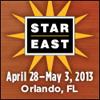 |
Deadlines Approaching? Budgets Cut? How to Keep Your Sanity
Slideshow
Testing projects have a habit of dissolving into chaos—and even strife—as deadlines approach and budgets are cut. When asked to do the impossible, risk management and mitigation tools can be the only way for testers to survive. Geoff Horne presents a proven method he uses for...
|
Geoff Horne, NZTester Magazine
|
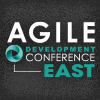 |
The Enterprise Product Owner: It Takes a Village
Slideshow
In classic Scrum textbooks, the Product Owner (PO) permanently hangs out in the agile team room, churning out a stream of user stories, regularly prioritizing the backlog, deciding color schemes for screen design-all while keeping the team focused and making coffee. In an enterprise agile project, it is physically impossible for one person to do everything the PO role requires. Elena Yatzeck believes the enterprise PO must be a team role, where the different people move in and out of their PO responsibilities in a disciplined and predictable way. To illustrate, Elena leads a simulation that takes you through a full enterprise agile project, providing shared PO resources to help you with each aspect of the project. She offers PO advice on organizational change models, team design techniques, extended story templates, and tips for backlog grooming.
|
Elena Yatzeck, JPMorgan Chase
|
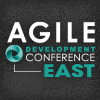 |
The Next Level of Agile: DevOps and Continuous Delivery
Slideshow
Mature agile organizations are introducing continuous delivery as a crucial step to realize their goal of delivering business value rapidly. Andrew Phillips highlights implementation issues about how agile development can fit with enterprise release management policies and governance needs. Andrew outlines proven practices and selection criteria for tools to help you address these issues. Then, he presents a DevOps case study demonstrating the continuous delivery process for building, packaging, deploying, and testing a complex application. Find out about deployment support for server and resource configurations, application binaries, database upgrades and rollbacks, messaging, and enterprise service buses. With the right tools and processes you can develop an open, extensible framework that supports additional services and platforms.
|
Andrew Phillips, XebiaLabs Inc.
|
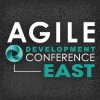 |
Specification-by-Example: A Cucumber Implementation
Slideshow
We've all been there. You work incredibly hard to develop a feature and design tests based on written requirements. You build a detailed test plan that aligns the tests with the software and the documented business needs. When you put the tests to the software, it all falls apart because the requirements were updated without informing everyone. But help is at hand. Enter business-driven development and Cucumber, a tool for running automated acceptance tests. Join Mary Thorn as she explores the nuances of Cucumber and shows you how to implement specification-by-example, behavior-driven development, and agile acceptance testing. By fostering collaboration for implementing active requirements via a common language and format, Cucumber bridges the communication gap between business stakeholders and implementation teams.
|
Mary Thorn, Deutsche Bank
|
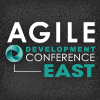 |
Agile at Scale with Scrum: The Good, the Bad, and the Ugly
Slideshow
Come hear the story of how a business unit at one of the world's largest networking companies transitioned to Scrum in eighteen months. The good-more than forty teams in one part of the company moved quickly and are going gangbusters. The bad-an adjacent part failed in its transition. The ugly-if you're in a large company with globally distributed teams, it's not hard to torpedo Scrum adoption. Steve Spearman and Heather Gray describe Scrum adoption challenges for a multi-million line, monolithic system developed across multiple locations worldwide. They share the techniques and tools that helped them implement Scrum in just two project cycles and the reasons part of the company failed to make the leap.
|
Steven Spearman, AgileEvolution
|
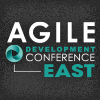 |
Distributed Scrum: Dangerous Waters-Be Prepared!
Slideshow
Even though team collocation is strongly recommended in agile methodologies, a distributed team is often required in the real world today. What is so important about collocating anyway? Can you overcome the challenges of a distributed Scrum team and still remain agile? What are the solutions? Brian Saylor tackles these important questions and more. While Brian realizes that implementing Scrum and agile practices in a distributed team is not easy, he found that it is possible if you understand the inherent problems and work hard-every day-to overcome them. Brian walks you through the reasons collocating is important for agile teams and the extra challenges distributed agile teams face. Then he dives into practical, real-world tools, tips, and techniques that organizations should research and consider before jumping into distributed waters-and don’t forget your life jacket.
|
Brian Saylor, Scripps Networks Interactive
|
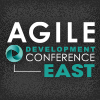 |
A Big Helping of DevOps with Career Advice on the Side
Slideshow
For decades-with the exception of agile-dev followers-the IT community has continued to build and protect its departmental silos. Project management, business analysis, development, testing, DB administration, and operations are just a few of the specializations that are carved out and institutionalized. Agile practices seek to eliminate the walls and empower people to deliver the highest value to the business. DevOps is the latest effort in this direction-bringing developers, testers, and operations together to replace their silos with a continuous collaboration pipeline. Paul Peissner introduces DevOps and explains how it is a key to transitioning from continuous integration (creating the finished software product immediately) to continuous delivery (making the product immediately available to users) and adding tremendous new business value.
|
Paul Peissner, CollabNet
|
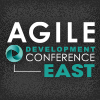 |
It's About Products Not Projects: Product and Portfolio Roadmaps If you are managing your portfolio using projects, and not products, you may be missing opportunities to deliver more business value to your organization. Product and portfolio roadmaps are a strategic tool that you can use to align business goals and value to product delivery plans. Ellen Gottesdiener explores the why's, what's, and how's of product roadmaps including the different types of product roadmaps, steps for building and sustaining product roadmaps, key planning inputs, who should be involved, and techniques for exploring and evaluating features along the roadmap. Roadmaps articulate how your products will achieve their vision, help uncover technology requirements, communicate to internal and external customers, and provide a sound foundation for planning. Learn how roadmaps can help you deliver the right products, address customer needs, and make tough choices that will deliver strategic value.
|
Ellen Gottesdiener, EBG Consulting, Inc.
|
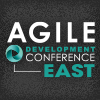 |
Scaling Agile at Dell: Real-life Problems - and Solutions
Slideshow
The transition from waterfall-based software development to an agile, iterative model carries with it well-known challenges and problems-entrenched cultures, skill gaps, and organizational change management. For a large, globally distributed software development organization, an entirely different set of practical challenges comes with scaling agile practices. Last year the Dell Enterprise Solutions Group applied agile practices to more than forty projects ranging from a collocated single team project to projects that consisted of fifteen Scrum teams located across the US and India. Geoff Meyer and Brian Plunkett explain how Dell mined these real-life projects for their empirical value and adapted their agile practices into a flexible planning model that addresses the project complexities of staffing, scale, interdependency, and waterfall intersection.
|
Geoffrey Meyer, Dell Inc. l Enterprise Product Group
|
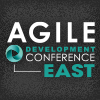 |
Transitioning to Kanban: From Theory to Practice
Slideshow
You're familiar with agile and, perhaps, practicing Scrum. Now you're curious about Kanban. Is it right for your project? How does Kanban differ from Scrum and other agile methodologies? From theory to practice, Gil Irizarry introduces Kanban principles and explains how Kanban's emphasis on modifying existing processes rather than upending them results in a smooth adoption. Instead of using time-boxed units of work, Kanban focuses on continuous workflow, allowing teams to incrementally improve and streamline product delivery. Explore how to move from Scrum to Kanban with new, practical techniques that can help your team quickly get better. Discover the use of cumulative flow diagrams, WIP (work-in-progress) limits, and classes of services. In a hands-on classroom exercise, you'll help create a value stream map, determine process efficiency, and experience techniques from the Kanban toolset.
|
Gil Irizarry, Yesmail
|

